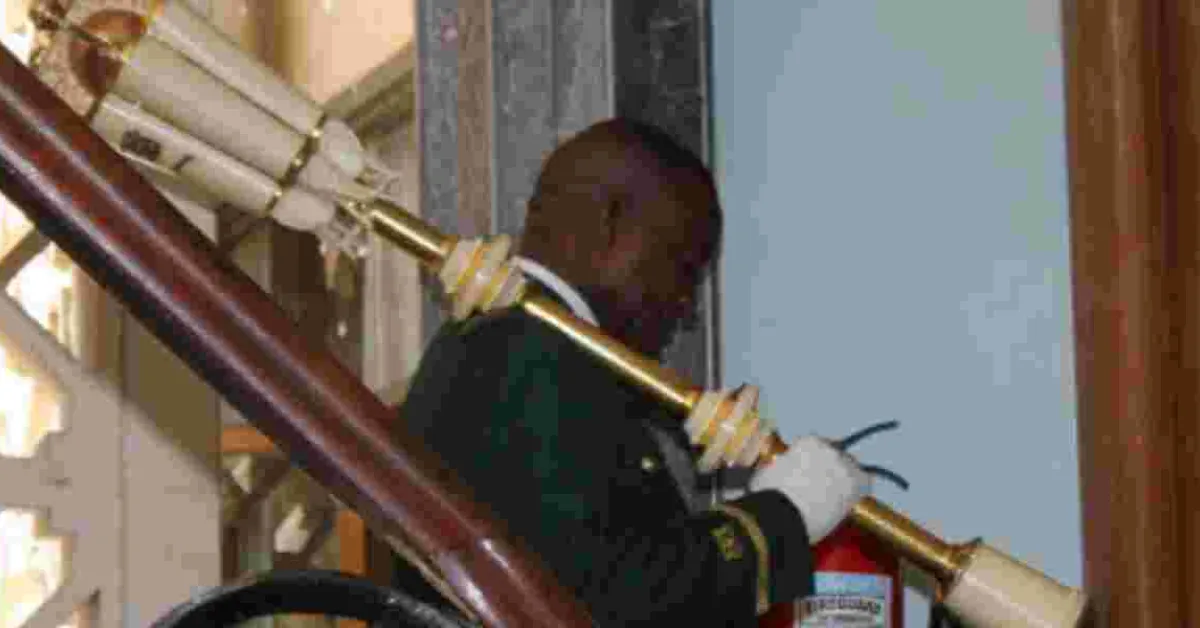The Power of Mace and How Its Absence Could Paralyze Kenya's Parliament

The ceremonial Mace is an ornate staff crafted from metal or wood and is of great importance in parliamentary traditions worldwide.
Typically carried by a designated Mace-bearer or prominently displayed before high-ranking officials during civic ceremonies, the Mace in Kenya serves as a potent symbol of authority, constitutional legitimacy, and the power vested in the legislative body. The Mace's historical roots can be traced back to medieval Europe, where it initially served a practical purpose as a weapon wielded by royal bodyguards, including the Serjeant-at-Arms. Over time, these functions transformed and the mace evolved into a highly decorative symbol.
Skilled craftsmen encased them in precious metals, elevating their status from mere weapons to ceremonial artefacts of great significance. Kenya's Mace tradition began in 1958 when the Speaker of the Legislative Council Cavendish Bentick received the first Mace from the crown prince. This event marked the formal introduction of the Mace into Kenya's parliamentary proceedings and set the stage for its continued importance in the nation's legislative processes. Since its introduction, the Mace has been an integral part of Kenya's parliamentary activities. During the bicameral era from 1963 to 1966, two Maces were utilized.
However, only one Mace has been in use since the adoption of the new Constitution in 2013 which reestablished the Senate. The symbolic significance of the Mace was further solidified upon Kenya's independence with President Mzee Jomo Kenyatta playing a crucial role in cementing its importance. On December 14, 1964, during the second session of the First Parliament, President Kenyatta formally presented the Maces to the two Speakers: Sir Humphrey Slade of the House of Representatives and Timothy C.M. Chokwe of the Senate.
This act underscored the constitutional authority vested in both Houses, emphasizing that their power derived directly from the people of the Republic of Kenya. From that historic moment onwards, the Mace has remained a constant presence in Kenya's parliamentary affairs. It serves as a visual reminder of the solemn duties carried out within the legislative chambers. Whether during debates, legislative sessions, or ceremonial occasions, the Mace stands as a testament to Kenya's commitment to democratic processes and the rule of law. The assembly won't be able to carry out its official duties If the Mace is stolen.
The mace represents the Speaker's and the legislature's power, and its presence is essential for the legitimacy of parliamentary proceedings. Without the mace, the parliament is considered non-functional until it is retrieved or replaced. National Assembly Speaker Moses Wetangula has clarified that the House Mace was neither stolen nor damaged during the breach of Parliament last week Tuesday.














Comments
The power belong to people. …
Permalink
The power belong to people. The people took their power back. Pastor Ng'ang'a said that
Ruto a thief.
Permalink
Ruto a thief.
https://www.facebook.com…
Permalink
https://www.facebook.com/share/v/pCtu54MQJRER972x/?mibextid=xfxF2i
It's NO longer Anti-government fiscal responsibility it's now thuggishness/theft and looting the economy
Colonialism at it's best.
Permalink
Colonialism at it's best.
The mace is just nonsense…
Permalink
The mace is just nonsense. The world won’t stop without it.
Add new comment